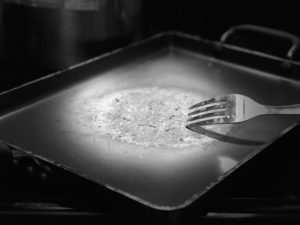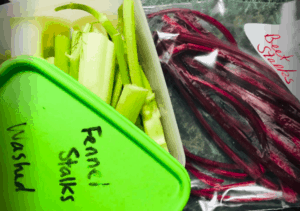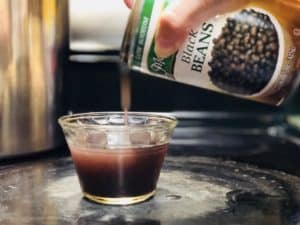I’m in a lot of cooking groups on social media. A lot.
I see hundreds of posts a day by people ranging from professional chefs to culinary toddlers on my newsfeeds. There are a multitude of brilliant things that come from them, and I can and do learn something from every single photo, video, and description that slides across my screen (yes, even from the toddlers!). There are also a lot of things I see that I wish I wouldn’t see – or hear – ever again. But I do. Over, and over, and over again.
I have therefore decided to make a post of the top offenders that I continually see. These are things that are incredibly easy to avoid or to fix when working with food and the glorious technologies surrounding its preparation. They are things that I hope will catch your eye from now on when they slide across your screen, too – if only so that I don’t have to suffer alone. But hopefully this post will also make the world a better place, at least in our kitchens.
So without further ado, here we go:
1. Using metal utensils on nonstick cookware
Scraping a stainless steel fork against a teflon pan is the kitchen equivalent of scraping nails down a blackboard – except that scraping nails down a blackboard won’t ruin it forever.

Any kind of metal against a teflon or ceramic (any nonstick) coating will crack and chip it, and cause it to peel off of the metal pan it’s glued to. The holes in your nonstick will get bigger and bigger – and those gaps in the coating will definitely be sticky and will burn what gets stuck to it. Not to mention all of the flaking chips that will be in your food. Yummy.
To avoid this, you have one of two choices: You can avoid using nonstick pans entirely and instead opt for stainless steel, copper, or my favorite – cast iron that will last longer than you, or you can choose heat-proof silicon or wooden utensils for your nonstick pans. Your pans, your wallet, and your food will thank you. And me. I will thank you, too.
2. Throwing away vegetable and scraps
You know how 99% of recipes out there call for stock? No, I don’t mean they ask you to invest money in the Dow Jones – I mean they want you to throw something a bit more flavorful than plain ole tap water into the pan. That’s the beauty of stock (or broth, or caldo, or bouillon, or whatever else you may call it): it’s a thousand times more flavorful than water, and that flavor punches through into your finished product.

Now rather than going out and paying $5 for a quart of organic vegetable stock, instead, save the trimmings and scraps from your vegetables (celery tops and roots, asparagus bottoms, onion scraps, even thoroughly washed potato skins, etc.) and freeze them. Once you have a gallon freezer bag full, throw them into a pot with enough water to cover them and boil it to death. Really. The more you boil the veggies, the more flavor will be sucked out of them and into the water. Once the veggies are good and dead (I like to let mine boil for at least two hours), strain it all, let it cool, and freeze it in quart-sized portions.
Now instead of bags full of trash, you’ll have the best darn tasting stock this side of whatever you’re on this side of! And instead of being $5 a quart, yours will be free! Use it instead of water in every dish you can to amp up your flavor game.
3. Draining and rinsing beans
If you’ve known me for more than a week, you probably know that one of my favorite things in the entire culinary world is aquafaba – the delicious (ok maybe not delicious, more like infinitely useful) nectar of the beans. Aquafaba literally means “bean water”, and that is exactly what it is. It’s the water left after cooking any kind of legume, and it’s my favorite ingredient in the kitchen. One day soon I’ll write an extensive post about it but for now I’ll just tell you that you should not be throwing this stuff away. If it goes down your kitchen drain, it should be accompanied by your tears. It’s liquid gold.

It can be used as an egg replacer in baking. And it can also be whipped up a la egg white into fluffy, rich, delectable meringue. Italian meringue, check. Swiss meringue, check. Meringue cookies, check. Japanese cotton cheesecake, check.
Basically, just like number two above, this is a case of people treating treasure like trash when it should be loved and cherished instead of thrown away. Just think of how much of this stuff you’ve tossed down the sink in your lifetime!
So from now on, save it! Pour it into an ice cube tray and then once the cubes are frozen, pop them together into a ziplock bag to store in the freezer long term. Each cube equals one egg for baking purposes. Garbanzo beans and butter beans make the best aquafaba for meringue cookies and cakes (it won’t tint it), while kidney and black beans make great aquafaba for things like brownies and pancakes (where the color doesn’t matter so much).
So there you go: three of my top pet peeves I see on a regular basis in kitchens around the World Wide Web. Please make it a little better out there and on yourself by avoiding these mistakes, and please also be bothered from now on every time you see someone else make them.
May you and your coffee both be strong,
Meggan

Good info to know!